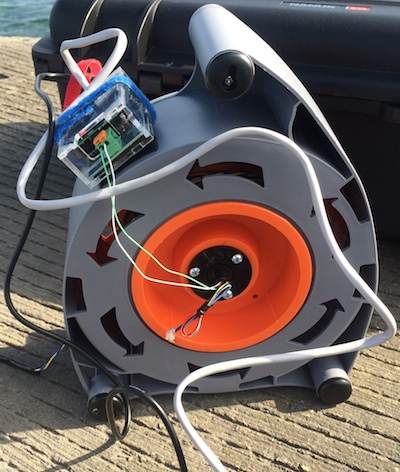21 Oct 2014

Geekfest is a weekly event hosted by Groupon’s engineering team. Every Tuesday at lunchtime, the company invites members of the tech community to present topics that are interesting to a technical audience.
I wish to express my thanks to Groupon for inviting me to present OpenROV at today’s Geekfest.
Continue reading →
10 Oct 2014
Members of the University of the West Indies (UWI) Computer Science Club and LinuxBarbados just finished a joint session this afternoon. I am grateful that the group invited me to present. Outline (prepared in advance):
-
30 minutes: Overview of Ruby, Rails, and some alternatives to both. What are the advantages and disadvantages of building web apps with Ruby? Can you build a business with this stuff?
-
30 minutes: Questions and Answers. This will be a highly interactive time. Anything discussed earlier is fair game. We can explore technical specifics if you like.
-
60 minutes: Deep dive into anything the group wants to explore related to technology, business, or the combination of the two. If the group doesn’t choose a topic, we will end early. But if the group is interested and engaged, we will continue.
Continue reading →
25 Sep 2014
The New York City Node JS Meetup asked me to speak about OpenROV Wednesday evening. About eighty developers came out for the meeting. Their meetings are especially cool because they’re held at the Empire State Building, probably the best known NYC landmark. Thank you Shutterstock, Matt Walters, and all of the NYCNode organizers for making it happen.
Continue reading →
23 Sep 2014
RubyCaribe (pronounced ka-REEB) is a conference for intermediate and advanced software developers who use Ruby. The conference will be held January 27 - 31, 2015 in Barbados. January is a beautiful time to visit the Caribbean, especially if you’re coming from a colder part of the planet.
Intermediate and advanced software developers will find RubyCaribe valuable because…
- Each RubyCaribe session features a 30- to 45-minute presentation followed by a 2-hour deep-dive lab. Learning is reinforced throughout.
- The venue, Hilton Barbados Resort, sits right on the ocean. Need a stretch break? Take a walk on the beach!
Continue reading →
10 Sep 2014
Note: This article has been updated with more photos and details describing slip ring installation.
Youthful exuberance drove me to pilot my OpenROV before I built a good tether management system. Bad idea! It’s better to have a tether management plan (any plan) before you pilot your OpenROV.
This article describes a tether management system that works for me. Other OpenROVers have devices that work, too. Take a look at a few and eventually you will find one that fits you.
Off-the-Shelf Parts
This tether management system is constructed entirely from off-the-shelf parts. The main component is an extension cord reel sold by Home Depot for about $14.00. Buy it, gut it, add the slip ring using three screws (also from Home Depot) and you’re good to go.
Continue reading →






